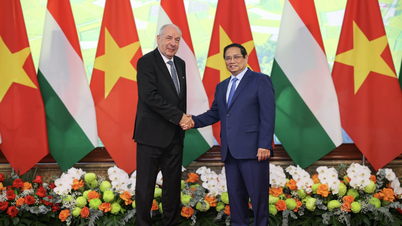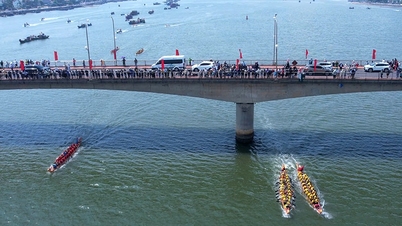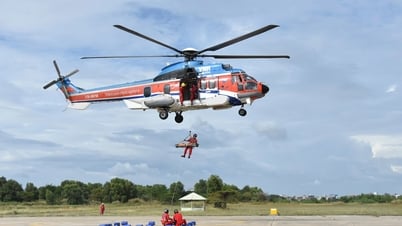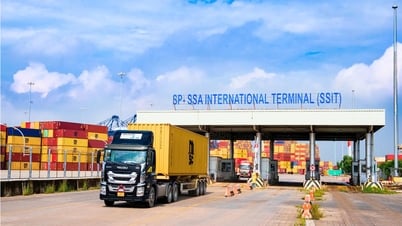Poland is at the forefront again
As reported by multiple media outlets, Polish President Andrzej Duda announced on Thursday that his country would provide four MIG-29s to Ukraine. Duda said the planes – among about a dozen that Poland inherited from the former GDR – would be delivered in “the next few days.”

Polish MIG-29s are very agile, but have limited range and weapons load. Photo: AP
“When it comes to MIG-29s, which are still operating to protect Polish airspace, it is a decision that was taken at the highest level. We can confidently say that we are sending MIGs to Ukraine,” President Duda said.
Mr. Duda also said that the remaining 28 MIG-29s in Poland's inventory will be put into maintenance so that they can be transferred to Ukraine as soon as possible. Poland plans to replace the MIGs with the South Korean FA-50 Golden Eagle light fighter and the US F-35 Lightning II stealth fighter. Therefore, it is very likely that the country will donate all of the MIG-29s to Ukraine.
Poland was once one of Europe’s most vocal opponents of Russia – even before the conflict in Ukraine. Many in Poland’s political and diplomatic circles still view Russia in Cold War terms.
In that light, sending MIGs to Ukraine is not a surprising move by Poland. Warsaw has long been a leader in NATO in providing heavy weapons, including battle tanks , to Kiev. Now, Poland’s decision to provide fighter jets could change NATO’s dynamics, serving as a catalyst for more allies to do the same.
Yesterday, Slovakia announced that it had approved a plan to supply Ukraine with 13 MIG-29s that it had owned since the former Soviet Union. According to the British newspaper The Guardian, both the Netherlands and Finland are also considering the possibility of providing fighter jets to the government of President Volodymyr Zelenskyy.
What can MIGs do?
The long-awaited fighter jets will soon arrive in Kiev. Now the question is, what difference can these MIG-29s make to Ukraine in its conflict with Russia?
First of all, it can be seen that these “iron birds” will certainly integrate very quickly into the Ukrainian air force. Simply because Ukraine also owns up to 36 MIG-29s and therefore, their pilots do not need to undergo training to be able to fly them, as with the Western aircraft that President Zelenskyy still asks NATO to provide.
Second, in terms of weapon adaptability, the Polish and Slovakian MIG-29s can carry all types of missiles, bombs or rockets that the Ukrainian Air Force has possessed since the former Soviet Union. This compatibility, along with the flexibility typical of interceptor fighters, makes the MIG-29s that Poland (and then Slovakia) transferred very useful to Ukraine.
Ian Williams, deputy director of the Missile Defense Project (CSIS), said the new fighters would be used primarily to intercept Russian aircraft and cruise missiles. “The MIG-29s are fast and very maneuverable,” Williams said. “They could be key to protecting Ukraine’s infrastructure and frontline. Having more aircraft allows Ukraine to fill the gap to intercept missiles earlier.”
F16 or Eurofighter is still more desirable
However, what happened on the Ukrainian battlefield shows that the MIG-29 also has limitations that make it less effective in intercepting Russian heavy attack aircraft such as the Sukhoi Su-30 and Sukhoi Su-35.

The Russian Air Force's Su-30 attack aircraft has a weapons load of up to 8 tons, a longer flight range and a stronger radar than the MIG-29 - Photo: Sputnik
Originally a light fighter designed to intercept and win close-quarters combat, the MIG-29 has a weapons payload and a range of 3,500 kg and 1,500 km, respectively. This is far less than the Su-30, which can carry up to 8,000 kg of weapons and has a range of 3,000 km.
Furthermore, the Su-30 was developed nearly 10 years after the MIG-29, so it has a more advanced and powerful avionics system than the MIG-29. The Su-30 has the ability to fly autonomously in all phases of flight, including low-altitude flight in terrain-following radar mode, and the ability to fight individually and in groups against air and ground/sea targets.
Using the same pulse Doppler radar, the Su-30 has twice the target detection range and the ability to track and capture more targets than the MIG-29 thanks to its larger, more modern capacity (the latest Irbis-E radar of the Su-30 can detect targets 400 km in the air and 200 km at sea). Those sketched numbers are not everything, but they partly show that the MIG-29 is just a temporary addition to the Ukrainian air force.

An F-16, the highly regarded multi-role fighter jet of the US Air Force. Photo: Lookheed Martin
In order to hope to reverse the situation in the air, Ukraine still hopes for more advanced fighter jets from the West, such as the F-16 or Eurofighter Typhoon. The superior avionics and ability to carry highly accurate weapons of these aircraft are considered to be enough to compete on equal terms with Russia's Sukhois.
But according to the latest developments, it seems that the US, Germany, the UK and key NATO countries are still not interested in the idea of providing the above fighter jets to Ukraine. Because unlike the MIG-29 interceptor fighters which are only for defense, the F-16 or Eurofighter Typhoon can completely attack any target deep inside Russian territory.
That’s why the White House said Thursday that Poland’s decision to send fighter jets was a “ sovereign decision” that would not prompt President Joe Biden to send F-16s to Ukraine. John Kirby, a top official at the US National Security Council, said Poland’s transfer of aircraft to Ukraine “does not change our calculus on F-16s.”
Nguyen Khanh
Source



































































































Comment (0)